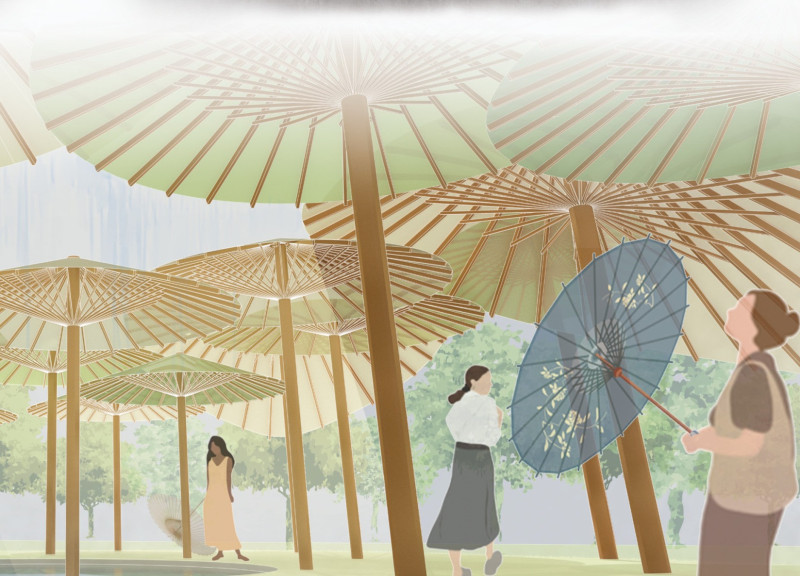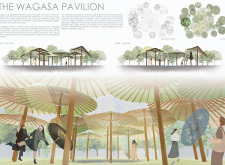5 key facts about this project
The Wagasa Pavilion is located in the rural forest area of Kyoto, a region known for its rich history in the production of wagasa, which are traditional Japanese umbrellas. The pavilion serves two main purposes: it acts as an exhibition space for local wagasas and provides a workshop where visitors can personalize their own umbrellas. The design concept is inspired by the form and function of the wagasa, aiming to connect the structure with its natural surroundings and cultural significance.
Design Concept
The architecture features a layered and grouped arrangement of umbrella-like structures that reflect the visual and functional qualities of traditional wagasas. This thoughtful configuration creates a strong connection between the pavilion's interior spaces and the adjacent forest, allowing the two to interact in a cohesive manner. Visitors are encouraged to wander through the pavilion, engaging with its various elements and experiencing its relationship with the landscape.
Materiality
An innovative approach to timber construction is employed throughout the pavilion, emphasizing sustainability and skillful craftsmanship. The umbrella structures are covered with semi-transparent oil paper, which allows soft light to enter while providing cover from the elements. This material choice not only enhances the pavilion's visual appearance but also ensures that the surfaces can be easily replaced, supporting a long-lasting design.
Functional Features
Some umbrella structures within the pavilion can open and close, using mechanisms similar to those of traditional wagasas. This functionality allows the space to adapt to different weather conditions, making it suitable for use during rain and enabling a connection to the outdoors. The larger, fixed umbrella structures are arranged in a way that optimizes visitor circulation and offers shade, contributing to a comfortable environment.
Rainwater Management
An important feature of the design is how it handles rainwater. The curved shapes of the umbrellas direct water toward a central courtyard. This practical solution not only addresses drainage but also creates a calming visual experience, mimicking the gentle flow of water associated with traditional wagasas. The interaction of rainwater with the pavilion enhances the overall experience for visitors, deepening their connection to the natural landscape.


















































